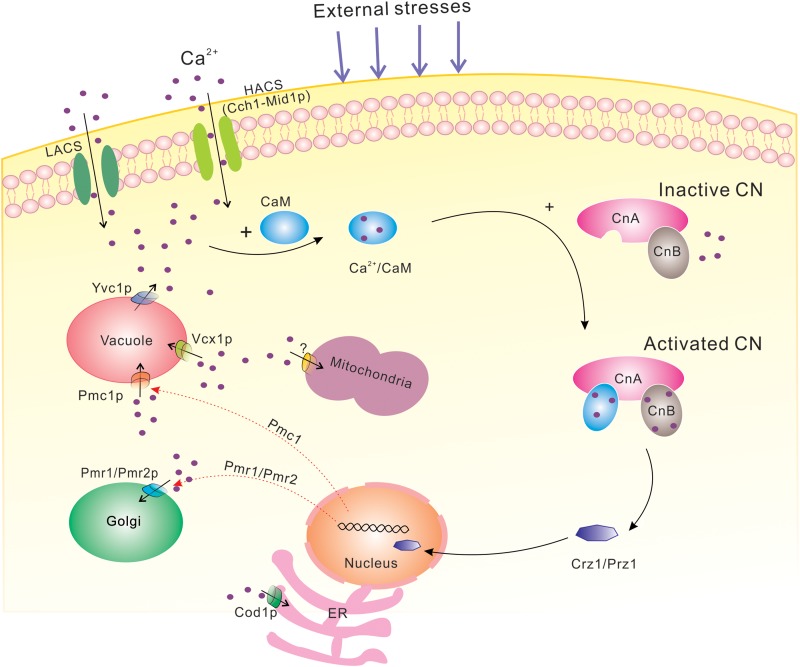FIG 1.
Description of the calcium-calcineurin signaling pathway in fungal cells. When external stresses are encountered, the plasma membrane Ca2+ influx system (HACS and LACS) is activated, resulting in a rapid influx of Ca2+. Transient increases in intracellular Ca2+ concentrations may also be due to secretion from internal compartments. The increased Ca2+ concentrations are sensed by CaM, and three calcium ions bind to CaM; then, Ca2+-calmodulin specifically binds to subunit A of CN and, simultaneously, Ca2+ binds to the high-affinity Ca2+-binding sites on the B subunit of CN, leading to its activation. Activated CN acts on its downstream targets CRZ1 and PRZ1, inducing their dephosphorylation and translocation from cytoplasm to nucleus. Calcineurin-PRZ1/CRZ1 signaling induces the expression of a set of Ca2+/CN-dependent target genes, including PMC1, PMR1, and PMR2. Subsequently, the intracellular Ca2+ concentration is reduced to basal levels, attributed to the uptake of Ca2+ by organelles. CaM, calmodulin; CN, calcineurin; ER, endoplasmic reticulum; LACS, low-affinity Ca2+ influx system; HACS, high-affinity Ca2+ influx system.

